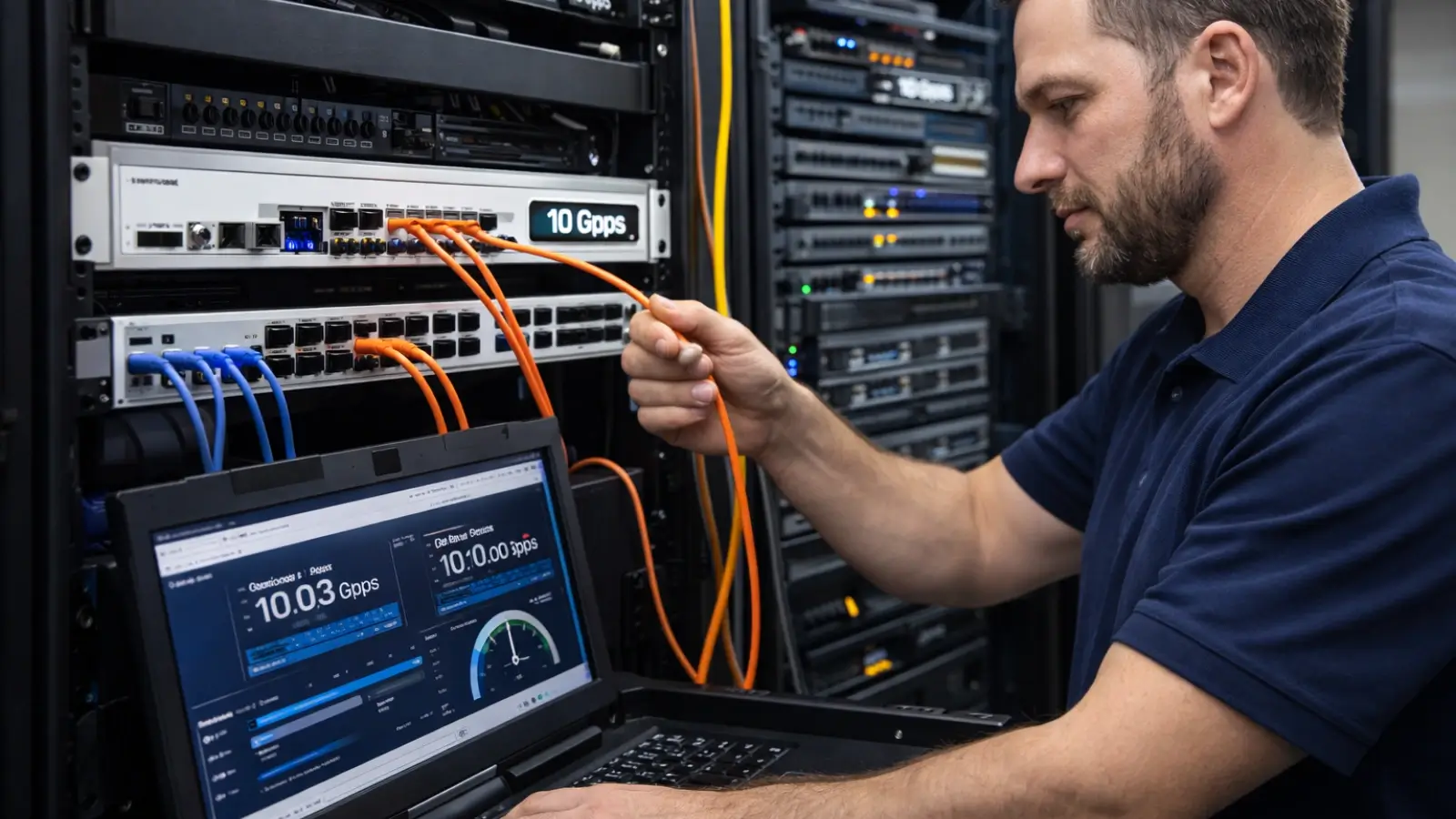Managing Windows patches across an enterprise feels like trying to change the tires on a moving car. You know it needs to be done, but the timing never feels quite right, and there's always the nagging worry that something might go wrong. If you're an IT leader wrestling with patch management, you're definitely not alone in this struggle.
The reality is that Windows patch management has become one of the most critical—and most challenging—aspects of IT security. With cyber threats evolving daily and attackers constantly searching for unpatched vulnerabilities, having a solid patch management strategy isn't optional anymore. It's the difference between a secure, resilient IT environment and a ticking time bomb waiting to explode.
This comprehensive checklist will walk you through the essential steps for building and maintaining an effective patch management program for Windows devices. We'll cover everything from initial planning to ongoing maintenance, giving you a practical roadmap that you can implement in your organization.
Phase 1: Foundation and Planning
Establish Your Patch Management Team
Before diving into technical details, you need the right people in place. Patch management isn't a one-person job—it requires coordination across multiple teams and disciplines.
Key team members should include:
- A patch management coordinator to oversee the entire process
- Security analysts to assess vulnerability risks
- Systems administrators familiar with your Windows infrastructure
- Application owners who understand business-critical software
- Network administrators to handle deployment logistics
- Help desk staff to manage user communications
The most successful patch management programs have clear ownership and accountability. Someone needs to be responsible for the overall process, but they also need support from specialists who understand different aspects of your environment.
Document Your Current Windows Environment
You can't manage what you don't understand. Creating a comprehensive inventory of your Windows devices is absolutely crucial, but it's often more complex than it initially appears.
Your inventory should capture:
- All Windows devices, including servers, workstations, and virtual machines
- Operating system versions and current patch levels
- Installed applications and their versions
- Hardware specifications and known limitations
- Network locations and accessibility requirements
- Business criticality and operational dependencies
This documentation becomes your reference point for every patching decision. Without it, you're essentially flying blind and making decisions based on incomplete information.
Create Risk-Based Prioritization Criteria
Not every patch deserves the same level of attention. Developing clear criteria for prioritizing Windows patches helps you focus your limited resources where they'll have the biggest impact.
Consider these factors when prioritizing:
- Vulnerability severity - Focus on patches that address remotely exploitable vulnerabilities
- System exposure - Internet-facing systems need faster patching than internal ones
- Business criticality - Systems that support critical business functions require careful planning
- Exploit availability - Patches for vulnerabilities already being exploited need immediate attention
- Compensating controls - Existing security measures might reduce the urgency of certain patches
Remember, your prioritization criteria should reflect your organization's specific risk tolerance and business requirements. What works for a financial institution might not work for a manufacturing company.
Phase 2: Testing and Validation
Build a Representative Testing Environment
Testing Windows patches before deployment is non-negotiable, but creating an effective testing environment requires careful planning and ongoing maintenance.
Your testing environment should mirror your production systems as closely as possible, but it doesn't need to replicate everything. Focus on the most critical applications and configurations that could be affected by patches.
Key components of your testing environment:
- Representative hardware and virtual machine configurations
- Copies of business-critical applications
- Network configurations that match production
- Monitoring tools to detect issues during testing
- Rollback capabilities for quick recovery
The goal isn't to catch every possible issue—it's to identify the most likely and most serious problems before they affect your production environment.
Develop Standardized Testing Procedures
Consistency in testing helps ensure that nothing important gets missed. Create detailed testing procedures that can be followed by different team members and adapted for different types of patches.
Your testing procedures should include:
- Basic functionality testing for all affected systems
- Application-specific testing for business-critical software
- Performance testing to identify potential slowdowns
- Security testing to verify that patches actually fix reported vulnerabilities
- Rollback testing to ensure you can undo changes if needed
Document any issues you discover and how you resolved them. This knowledge base becomes invaluable for future patch testing efforts.
Establish Testing Timelines
Balancing thorough testing with timely deployment requires clear timelines that account for different types of patches and their associated risks.
Emergency patches addressing actively exploited vulnerabilities need accelerated testing—ideally completed within 24-48 hours for critical systems. These situations require having procedures in place to fast-track testing without skipping essential steps.
Regular security patches should complete testing within one to two weeks of release. This timeline provides enough time to identify potential issues while maintaining a reasonable security posture.
Non-security patches can follow your standard maintenance schedule, but don't ignore them entirely. These updates often improve system stability and performance, which indirectly contributes to security.
Phase 3: Deployment Strategy
Choose the Right Deployment Method
Windows patches can be deployed through various methods, each with its own advantages and challenges. The right approach depends on your environment size, complexity, and resource constraints.
Manual deployment works for small environments but becomes impractical as you scale. It's labor-intensive and prone to human error, but it provides maximum control over the process.
Automated deployment tools can significantly reduce the workload and improve consistency. However, automation requires careful configuration and monitoring to prevent widespread issues.
Hybrid approaches combine automated deployment for routine patches with manual oversight for critical updates. This often provides the best balance between efficiency and control.
Plan Your Deployment Schedule
Timing patch deployments strategically can minimize business impact while maintaining security. Consider your organization's operational patterns and plan accordingly.
Factors to consider:
- Business peak hours and critical operational periods
- Maintenance windows and scheduled downtime
- Dependencies between systems and applications
- Staff availability for monitoring and support
- Rollback capabilities and recovery procedures
Many organizations find success with staggered deployments that start with less critical systems and gradually move to more important ones. This approach allows you to identify and resolve issues before they affect your most critical infrastructure.
Prepare for Rollback Scenarios
No matter how thorough your testing, patches sometimes cause unexpected issues in production. Having a solid rollback plan is essential for minimizing downtime and maintaining business continuity.
Your rollback plan should include:
- Clear criteria for when to initiate a rollback
- Step-by-step procedures for removing patches
- Communication protocols for notifying stakeholders
- Testing procedures to verify systems after rollback
- Documentation requirements for post-incident analysis
Practice your rollback procedures regularly to ensure they work when you need them most. The middle of a crisis is not the time to discover that your rollback plan has gaps.
Phase 4: Communication and Change Management
Develop Communication Protocols
Effective patch management requires clear communication with multiple stakeholders who have different needs and concerns. Develop templates and procedures for different types of communications.
Key communication elements:
- Advance notice of planned patching activities
- Clear explanations of why patches are necessary
- Realistic timelines for patch deployment
- Instructions for users during maintenance windows
- Updates on progress and any issues encountered
Remember that different audiences need different levels of detail. Executives want high-level summaries, while technical staff need specific implementation details.
Manage User Expectations
End users often see patches as inconvenient interruptions rather than necessary security measures. Helping them understand the importance of patches and planning around maintenance windows improves cooperation and reduces frustration.
User communication should include:
- Clear explanations of what patches do and why they're important
- Advance notice of system downtime or restart requirements
- Instructions for preparing for maintenance windows
- Alternative work arrangements during extended downtime
- Contact information for help desk support
Consider implementing user-friendly patch management policies that balance security needs with operational requirements. For example, allowing users to defer non-critical patches for a limited time can improve compliance while maintaining security.
Train Your Team
Patch management skills aren't innate—they need to be developed through training and practice. Ensure your team understands not just what to do, but why they're doing it.
Training should cover:
- Vulnerability assessment and risk analysis
- Patch testing procedures and tools
- Deployment methods and troubleshooting
- Communication protocols and escalation procedures
- Rollback procedures and recovery methods
Regular training updates keep your team current with evolving threats and new tools. Consider bringing in external experts or attending industry conferences to stay on top of best practices.
Phase 5: Monitoring and Continuous Improvement
Track Key Performance Metrics
Measuring the effectiveness of your patch management program helps identify areas for improvement and demonstrates value to management.
Important metrics to track:
- Time between patch release and deployment
- Percentage of systems successfully patched
- Number of incidents caused by patches
- Security incidents related to unpatched vulnerabilities
- Resource utilization and team efficiency
- User satisfaction with patch management processes
Regular review of these metrics helps you identify trends and bottlenecks. Maybe your testing process is too slow, or perhaps you need better tools for deployment tracking.
Conduct Regular Program Reviews
Schedule regular reviews of your patch management program to assess what's working and what needs improvement. These reviews should involve all stakeholders and result in actionable improvements.
Review topics should include:
- Effectiveness of current processes and procedures
- Resource allocation and team capacity
- Tool performance and potential upgrades
- Stakeholder satisfaction and feedback
- Emerging threats and changing requirements
Don't be afraid to make significant changes if your current approach isn't working. What works for one organization might not work for another, and what works today might not work tomorrow as your environment evolves.
Stay Current with Threats and Tools
The cybersecurity landscape changes rapidly, and your patch management strategy needs to evolve accordingly. Stay informed about new threats, vulnerabilities, and management tools.
Ways to stay current:
- Subscribe to security bulletins and threat intelligence feeds
- Participate in industry forums and user groups
- Attend security conferences and training sessions
- Engage with vendors and security researchers
- Regularly assess new tools and technologies
Common Pitfalls to Avoid
Learning from common mistakes can save you significant time and frustration. Here are some pitfalls that catch many organizations:
Trying to patch everything at once overwhelms your team and increases the risk of widespread issues. Start with a manageable scope and gradually expand your program.
Ignoring dependencies between systems and applications can cause cascading failures. Map out these relationships before deploying patches.
Not having adequate rollback procedures leaves you vulnerable when patches cause unexpected issues. Practice your rollback procedures regularly.
Focusing only on security patches while ignoring stability and performance updates can create long-term problems. All patches contribute to overall system health.
Poor communication with stakeholders creates resistance and reduces cooperation. Invest time in explaining why patches are necessary and how they benefit the organization.
















